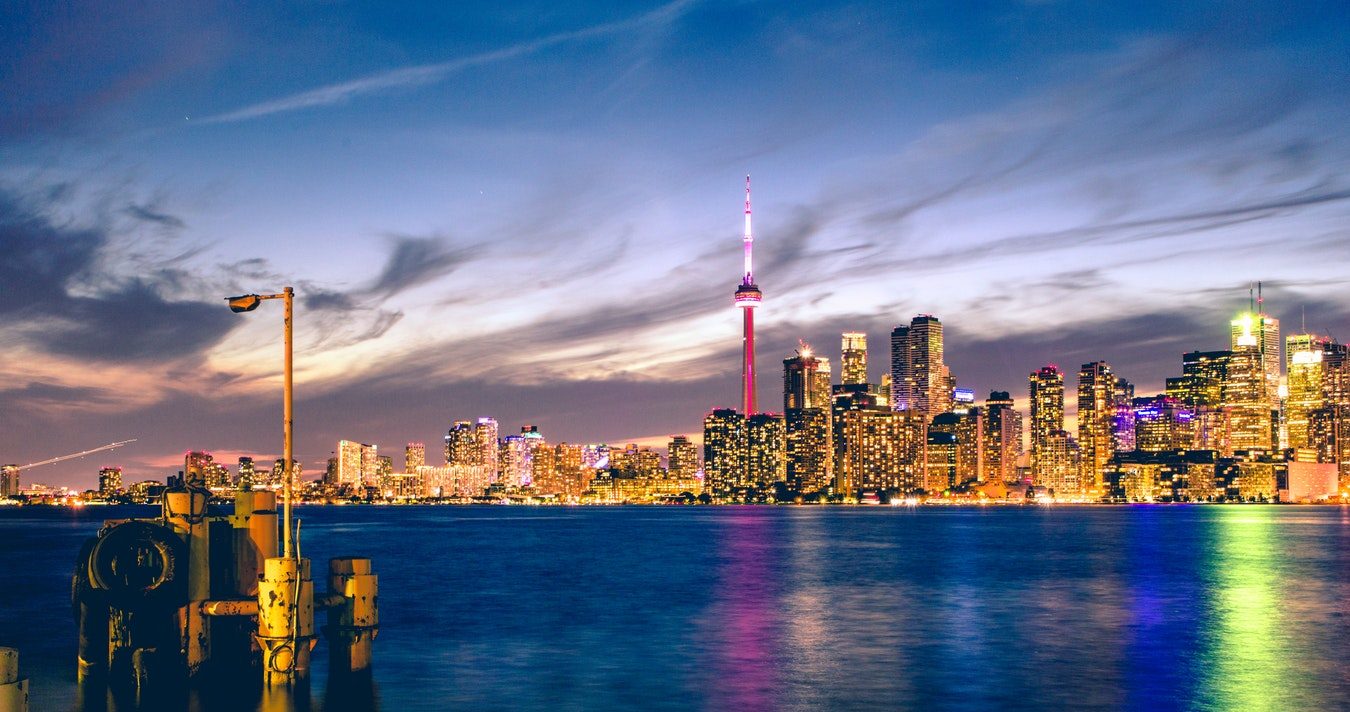What is the Status of Canada’s Refugee Crisis? (PART 1)
Why There’s No Cut and Dry Answer
In the recent months, there have been some stories reported in the media that Canada may have put itself in a vulnerable position by subjecting itself to so-called illegal border crossings by thousands of refugee claimants. There's a misconceived notion that too many legitimate candidates for immigration into Canada are being bumped for asylum seekers causing Canada to lose control of the border.
Canada’s immigration history has been different from that of the United States or many European countries, mainly because of climate and geography. Surrounded by cold ocean water and sharing a border with the U.S. has meant that for a long time, Canada was insulated from the mass influxes of immigrants and refugees. However, refugees cross borders throughout the world every single day, fleeing persecution, risk and mistreatment. The recent phenomenon in Canada is not unusual if placed in and informed by a global perspective.
Canada has in recent history accepted large numbers of immigrants with mostly positive results. Since Canada was founded in 1867, foreign-born Canadians have accounted for between 15 and 20 percent of the country’s total population.
While some argue that Canada accepts and welcomes immigrants, others argue that this narrative is fragile and vulnerable to shifting public opinion. Public support for immigration is predicated on a fair and organized immigration system. If the public fears that the system is being taken advantage of, and that asylum seekers are jumping the queue, support may falter.
However, in reality, this is not an accurate reflection of what is actually happening. Refugee claimants crossing the border are not “illegal” in any sense of the word. They are seeking asylum by crossing into Canada at the port of entry, which is entirely permissible under Canadian refugee law. These claimants are not automatically accepted in any case, and they are by no means jumping the queue. They still have to go through the refugee claim process and demonstrate that they meet the relevant criteria under Canada’s Immigration and Refugee Protection Act. If they are not successful in that process, their case will be refused, and they will be asked to leave Canada. If they are successful, then they will be recognized as legitimate convention refugees. It is therefore entirely inaccurate to label such asylum seekers “illegal” given that the law clearly governs their entry into Canada and their ability to file an asylum claim.
If Canada wishes to maintain its status as one of the most inclusive and accepting countries in the world, the government will need to continue its efforts to educate the public on the legal underpinnings of our refugee system so that communities and the population at large can differentiate between inaccurate labelling and our legitimate refugee claim process. Unfortunately, this is a difficult task given the amount of misinformation in some of the media articles on this topic. Ultimately, however, it is the obligation of every individual in Canada to inform themselves of the law and put the issues reported in the media in its proper legal context.
Canada's Visa Refusal Rate Soars
Visitor-Visa Refusal Rates on the Rise for Countries in Conflict
Canada’s visitor-visa refusal rate has been soaring in recent years. A Globe and Mail analysis of federal immigration statistics from Immigration, Refugees and Citizenship Canada (IRCC) shows that the visitor visa refusal rate rose from 18 percent of all applications in 2012 to 30 percent by the first quarter of 2018.
There appears to be a disconnect between Canada’s welcoming message to newcomers to Canada and the high rates of refusal to visitors from other countries.
The number of Temporary Resident Visa applications the IRCC processed every year between 2012 and 2017 increased from 1.3 million to 2.3 million, according to the Globe and Mail. Over those five years, the number of refusals has jumped to more than 600,000 in 2017.
What Countries Are Visitors Being Refused From?
Visitor-visa applications to Canada are being refused from all over the world, but particularly from countries in Africa, the Middle East and South America. Over the last two years, 75 percent of applications from Somalia, Yemen, Syria and Afghanistan were rejected.
Recently, Venezuelans have been sounding alarms about the high rates of refusal for visitors from the South American country. The number of visitor-visa applications that have been refused from Venezuela has more than doubled in recent years since the country has fallen into economic and political crisis.
Canada refused 216 such applications from Venezuela in November of 2016, and that number rose to 468 in March of this year.
Are Visa Refusals Discriminatory?
Many believe that the nature of Canada’s visa application refusals has become discriminatory. While Canada’s federal department of immigration says it has not changed its visa policies for Venezuelan nationals, Canadians from Venezuela disagree. Some are saying their family members are being penalized because of the country they live in.
The federal government says every applicant is given the opportunity to state their case for a visa and must provide relevant documentation and information to support their case.
Visitor-Visa Criteria
According to the Canadian government, in order to qualify for a travel visa to Canada, visitors must meet the following requirements:
- Have a valid travel document, like a passport;
- Be in good health;
- Have no convictions;
- Convince an immigration officer that you have ties—such as a job, home, financial assets or family—that will take you back to your home country;
- Convince an immigration officer that you will leave Canada at the end of your visit; and
- Have enough money for your stay.
One thing is for certain: Canada’s rising visa refusal rates can impact the international community’s opinion of Canada as an open and welcoming nation.
Canada Ninth-Largest Recipient of New Asylum Applications
Asylum Application Numbers Vastly Surpassing Previous Years
Tightening security around U.S. borders is leading to a massive influx of asylum seekers flooding to Canada seeking refuge, making Canada the ninth-largest recipient of asylum seekers in the world in 2017.
A new report from the United Nations Refugee Agency shows that there were a record 68.5 million people displaced last year, and tens of thousands of these refugees are making their way to Canada.
The number of asylum seekers arrested at the Canadian border has more than doubled from the numbers recorded for the same period last year, and officials at the Canadian border are expecting upwards of 400 people crossing into Quebec daily this summer.
Why are some asylum seekers choosing Canada over the U.S.?
Immigration policies under the Trump administration include a zero-tolerance policy for anyone entering the U.S. illegally, leading to reports of children being separated from their parents and detained while their parents are charged.
Some refugees fleeing Nigeria or Haiti fear that Trump’s policies towards refugees will make it difficult for them to stay in the U.S., so they’re heading for Canada instead where immigration lawyers say it is easier to obtain refugee status.
How are asylum seekers crossing into Canada?
Asylum seekers are obtaining tourist visas, staying for a few days in the U.S., and then making their way across the Canadian border.
Most asylum seekers crossing into Canada from the U.S. do so from New York State where they take Greyhound buses and then taxis to the border with Quebec where the Royal Canadian Mounted Police await them to arrest them.
According to the Third Safe Country Agreement between Canada and the U.S., asylum seekers must claim refuge in the first country they step foot in unless they qualify for a number of narrow exceptions. For those who are coming from the U.S. to Canada, their first country was the U.S. so if they try to go through a regular border crossing into Canada, they will be turned away.
If asylum seekers go to an irregular crossing, they will be arrested and, in most cases, allowed to stay in Canada following a security screening until they have a refugee hearing.
How is the Canadian government responding?
Canada’s Minister of Immigration, Ahmed Hussen, travelled to Nigeria in May to speak to officials about the influx.
The federal government has also committed $173.2 million over two years to strengthen border security and accelerate the processing of asylum claimants arriving this year.
The Canadian government says it is looking to protect its borders while still adhering to international conventions regarding the rights of refugees.
"Coming across the border in a way that seeks to circumvent our procedures is no free ticket to Canada," Ralph Goodale, Minister of Public Safety and Emergency Preparedness, said in a statement in May. “We will continue to ensure an orderly managed border, including the compassionate treatment of those who genuinely need Canada's protection. And we will continue to work with the United States to deter the misuse of travel documents that has helped drive the influx," he added.
Ontario Won't Work with Ottawa On Asylum Seeker Challenges
Ontario Premier Doug Ford Meets with Prime Minister Justin Trudeau for the First Time and Refuses to Cooperate on Immigration Situation
In his first official meeting with Prime Minister Justin Trudeau, Ontario’s new premier, Doug Ford, has clashed with the federal government’s approach to handling an influx of asylum seekers into the province. Premier Ford is refusing to work with the federal government or cooperate on managing the influx of asylum seekers into Ontario.
Ford’s Position
Premier Ford has publicly stated that the federal government’s immigration policies are putting a strain on Ontario’s resources and that Trudeau’s administration is encouraging immigrants to enter Canada illegally.
Prime Minister Trudeau tweeted in 2017 that immigrants are welcome in Canada in response to U.S. President Donald Trump’s immigration ban. “To those fleeing persecution, terror & war, Canadians will welcome you, regardless of your faith. Diversity is our strength #WelcomeToCanada.”
Ford’s office released a statement blaming the federal government for creating a housing and services crisis in Ontario. “This mess was 100 per cent the result of the federal government, and the federal government should foot 100 per cent of the bills,” the statement said.
Federal Government’s Response
After their meeting, Trudeau said that he didn’t think Ford was aware of Canada’s international obligations with regards to accepting refugees and asylum seekers and he spent time explaining the system to the premier.
The federal government has pledged $50 million to Ontario, Quebec and Manitoba to help offset the costs of the influx of refugees coming across the Canadian border from the U.S. The provinces have asked for more support. The federal government has promised $11 million to Ontario.
Both the federal government and refugee lawyers agree that greater clarity and collaboration between all levels of government regarding the influx of asylum seekers in Ontario is needed. However, Ford seems to be refusing to work with the federal government to handle the situation.
Toronto Mayor Tory Sounding Alarm
Meanwhile, Toronto Mayor John Tory has been seeking more funding and help from the federal government. Tory has also been seeking help from the province to deal with the the housing and shelter shortage for refugees coming into the city.
Tory has said the city alone needs $64 million to deal with the influx of asylum seekers. According to a city report, the number of refugees and asylum seekers using the city’s shelters went up from 459 in 2016 to 3,209 in 2018.
Tory has been raising these concerns for weeks about the lack of shelter space and funding to assist asylum seekers flooding into Toronto from the U.S. He has appealed to Ford and to the federal government for help, but with Ford playing politics and refusing to work with Ottawa on the issue, the various levels of government remain at odds.
Immigrant Businesses Enjoy Equal Financing Opportunities
Stats Can Study Reveals Immigrant Business Owners Have Equal Opportunity to be Approved as Canadian-Born Owners
Immigrants to Canada looking to start a business are often perceived to be at a disadvantage and to have more difficulty than Canadian-born business owners in accessing capital once they arrive in Canada, but a new report from Statistics Canada shows that’s simply not the case.
This report shows that, although immigrants often seek financing for their businesses at lower rates than their Canadian-born counterparts, they’re approved at roughly the same rate.
Stats Can findings
The Statistics Canada study, released June 18, shows that small and medium-sized businesses with immigrant owners are roughly as likely as businesses with Canadian-born owners to be fully approved for an application for debt or government funding.
In the study, 39 percent of immigrant-owned small and medium-sized businesses applied for funding, as did 46 percent of Canadian-born owners. These numbers show that immigrant-owned businesses apply for financing and capital less often than Canadian-born business owners.
Furthermore, immigrant-owned business that do apply for financing are approved at roughly the same rates as Canadian-born entrepreneurs, according to the study’s findings.
When researchers looked at applications for debt financing, businesses with Canadian-born owners were fully approved 82 percent of the time, while, firms with immigrant owners were fully approved 77 percent of the time. Lease applications showed similar results as 97 percent of applications from Canadian-born owners were approved, while 92 percent of those from immigrant owners were approved.
Trade applications also saw similar results as 99 percent of Canadian-owned businesses received approval, while 97 percent of immigrant-owned businesses were approved.
Immigrants may still face challenges
Although immigrants are often approved for financing and capital for their businesses, the reasons why some are denied financing often differs from why Canadian-born owners are denied.
Statistics Canada found that immigrants are often rejected for reasons such as insufficient collateral, risk, or no credit record.
All in the same boat
Whether Canadian-born or an immigrant, business owners in Canada face some of the same challenges when seeking financing.
The Statistics Canada survey found that both kinds of small and medium-sized business owners face similar issues, such as fluctuations in market demand for their goods, increased competition, and rising costs.
“Taken together, these results suggest that immigrants and Canadian‑born entrepreneurs finance their businesses quite similarly on an on‑going basis,” the study’s authors wrote. “The observed differences are usually marginal.”





